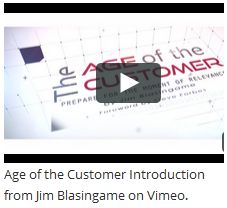It’s doubtful that American small businesses have ever been impacted by as many potential business interruption events as we’ve seen in the past 20 years: beginning with the Oklahoma City bombing, the events of 9-11, and now the Boston bombings; hurricanes like Katrina and Sandy; tornados like those that wiped out Joplin, MO, and Hackleberg, AL, and many floods.
 Recently we asked our online audience if they were financially prepared for an interruption with this question: “Could your business handle the financial impact of a business interruption?” Almost one-fifth said they, “… have cash and business interruption insurance if we need it,” and a little more than one-third reported they had “…cash and credit if we need it.” The other half admitted, “We would be hurting if it lasted more than a few days.”
Recently we asked our online audience if they were financially prepared for an interruption with this question: “Could your business handle the financial impact of a business interruption?” Almost one-fifth said they, “… have cash and business interruption insurance if we need it,” and a little more than one-third reported they had “…cash and credit if we need it.” The other half admitted, “We would be hurting if it lasted more than a few days.”
There are three kinds of interruption preparation to focus on: operational, financial and digital. Here are examples of how to manage all three:
Operational
What would you do if your building became unavailable to you or your customers?
- Use laptops that allow key employees to work and connect remotely, both internally and with customers. And make sure they have high-speed Internet connections at home.
- Identify and become proficient with cloud-based applications that serve as an alternative for any installed programs that may be lost.
Financial
A significant part of the working capital of most small businesses is from cash flow. What would happen if your cash flow was interrupted?
- Purchase a “business interruption” rider on your property and casualty policy to pay you cash upon the acceptance of a claim. Read the fine print; all policies are not created equal.
- Maintain a close working relationship with your banker so you won’t have to introduce yourself to the person you might ask for a disaster loan.
Digital
Small businesses are increasingly using digital assets more and physical assets less. Are you prepared to protect your data as diligently as you do your building, equipment and inventory?
- Assign one person to be in charge of keeping all computers enabled with a proven firewall and anti-malware program, and keep them current.
- Regularly copy critical data from your hard drives and store it offsite. Better yet, backup your date with one of the cloud-based backup and recovery firms. Search for “online data backup.”
Business interruption – it’s a matter of when, not if.











